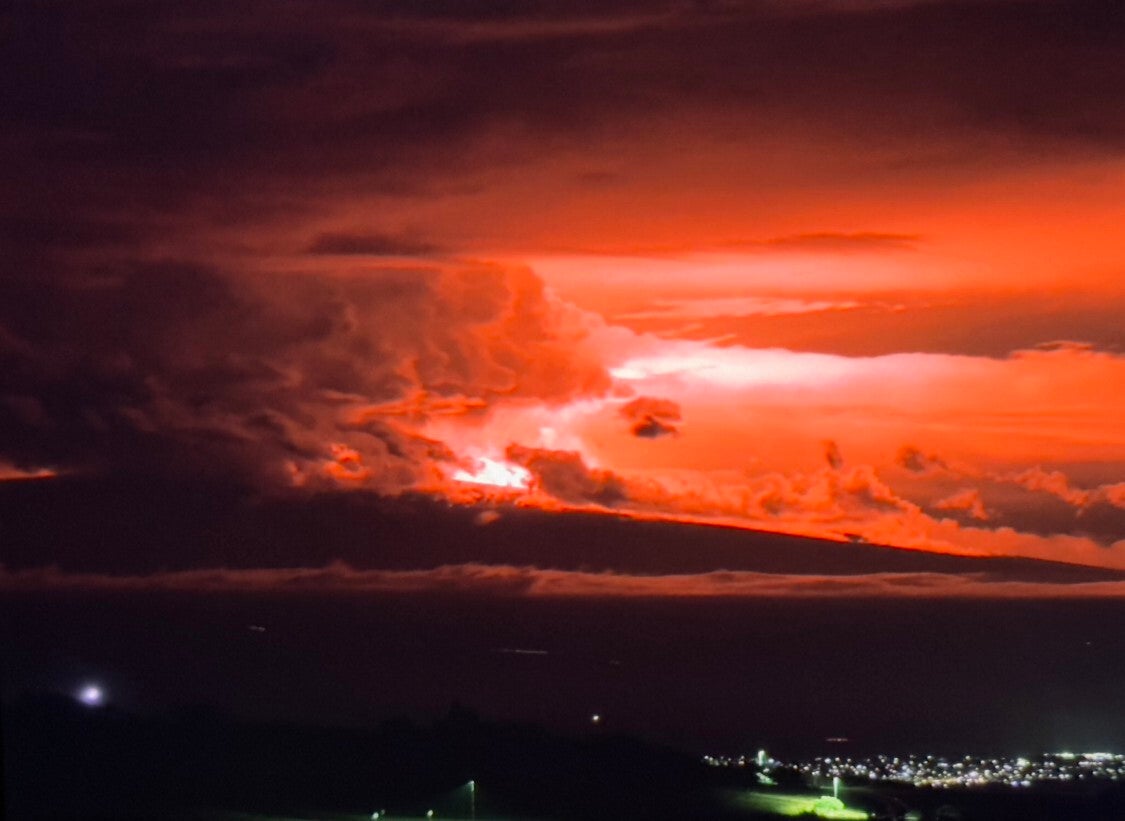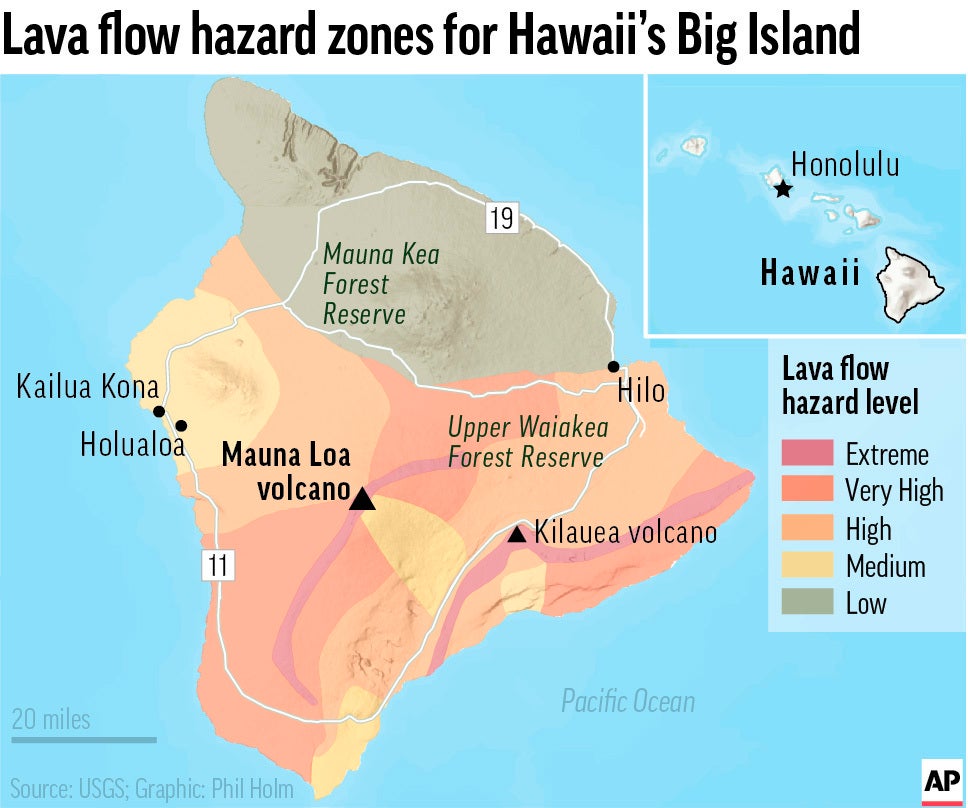
Hawaii’s National Weather Service branch has issued an ashfall warning after an eruption began on Mauna Loa, the largest volcano on Earth, on the state’s Big Island.
The eruption, the volcano’s first in nearly four decades, has triggered dozens of earthquakes of more than 2.5 magnitude on the richter scale, one of them clocking in at 4.2.
According to the Hawaiian Volcano Observatory, the eruption began at approximately 11:30pm Hawaii time on Sunday night. The service warned that “winds may carry volcanic gas and possibly fine ash and Pele’s Hair downwind.”
So far, the service has said that lava flows “are contained within the summit area and are not threatening downslope communities”, but also warned tha the early stages of eruption can be highly changeable, with lava flows prone to changing rapidly.
“If the eruption remains in Moku‘āweoweo, lava flows will most likely be confined within the caldera walls,” wrote the observatory in its overnight notification. “However, if the eruptive vents migrate outside its walls, lava flows may move rapidly downslope.”
Residents of the area around the eruption have been warned that up to a quarter-inch of ash may fall on some areas. Those with respiratory illnesses have been told to remain indoors, while all others are advised to wear face coverings when outdoors.

Pele’s Hair is the name for thin strands of glass fibres formed during some eruptions. The National Park Service warns that the fibres, which are light enough to be carried on strong winds, are sharp enough to embed themselves in human skin and eyes.
Mauna Loa’s last major eruption was in 1984, when lava flows threatened the Big Island’s main population centre, Hilo. There have been a total of 39 eruptions documented since 1832; according to the US Geological Survey, they have occurred once every six years on average over the last 3,000 years.

Warnings leading up to the latest eruption were first issued in September, with geologists noting an uptick in the frequency of earthquakes around the volcano. By the start of October, there were around 40 being deteced every day, resulting in the warning level for the volcano being upgraded. The alert is now at the highest level.







